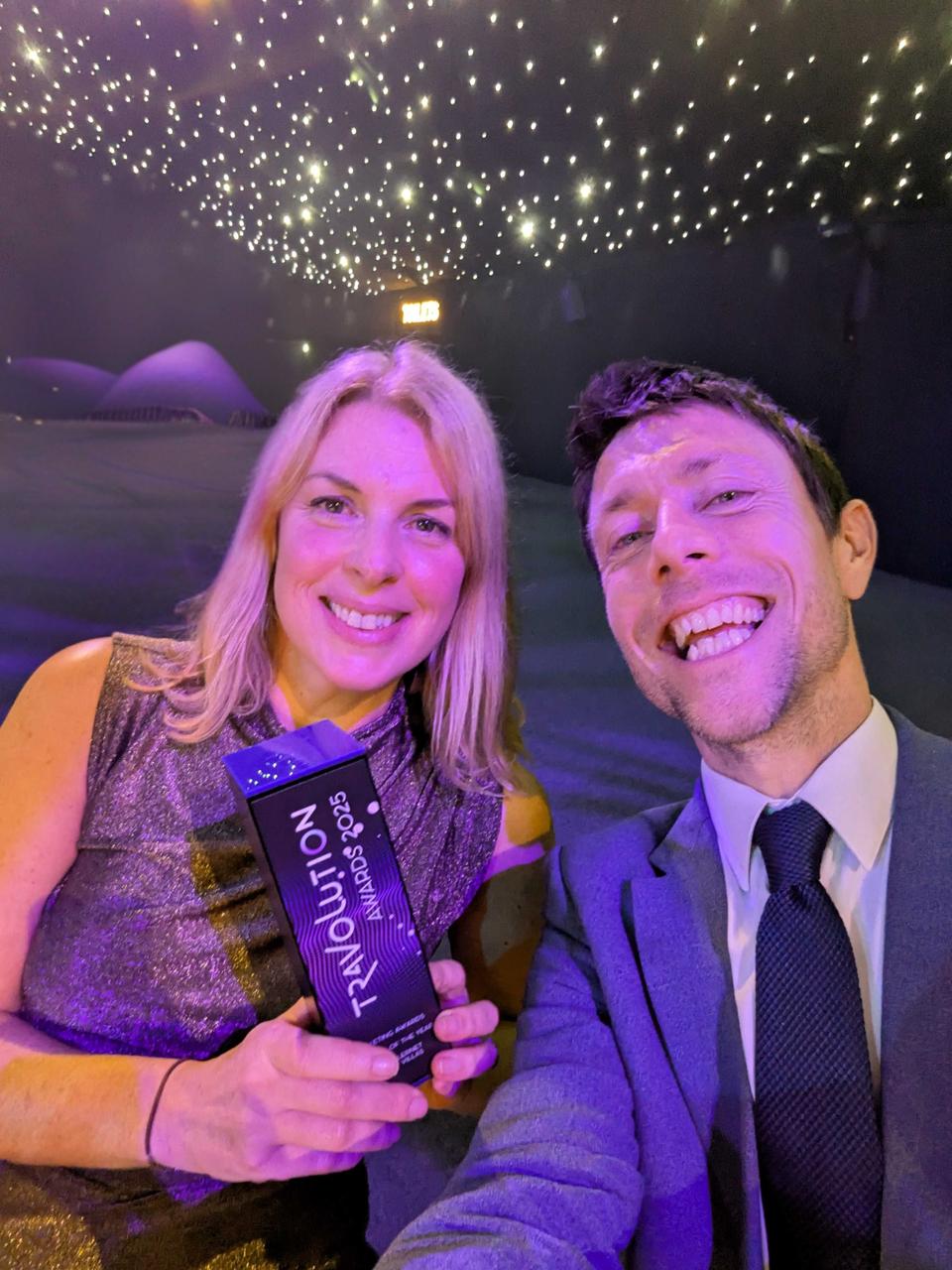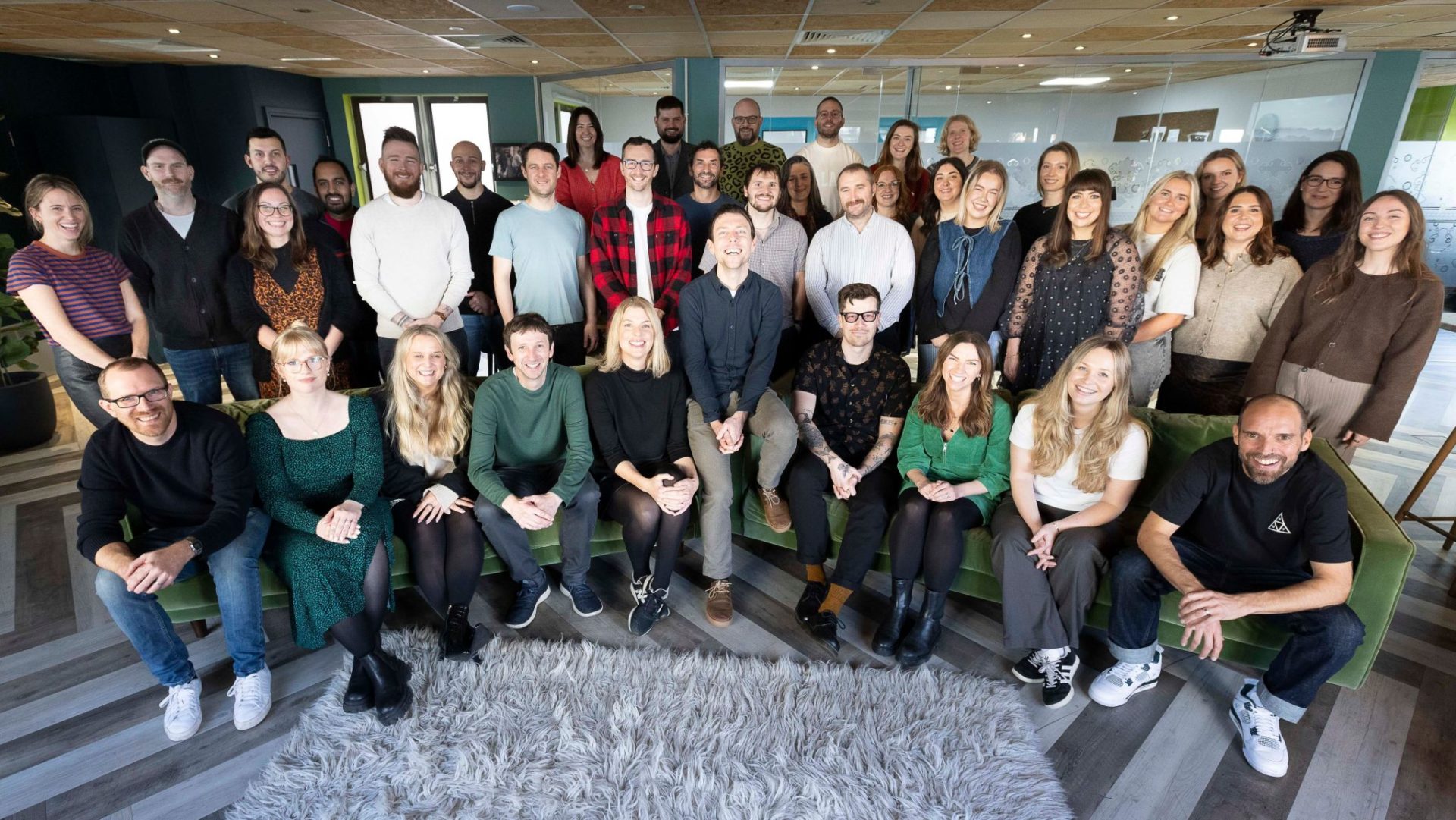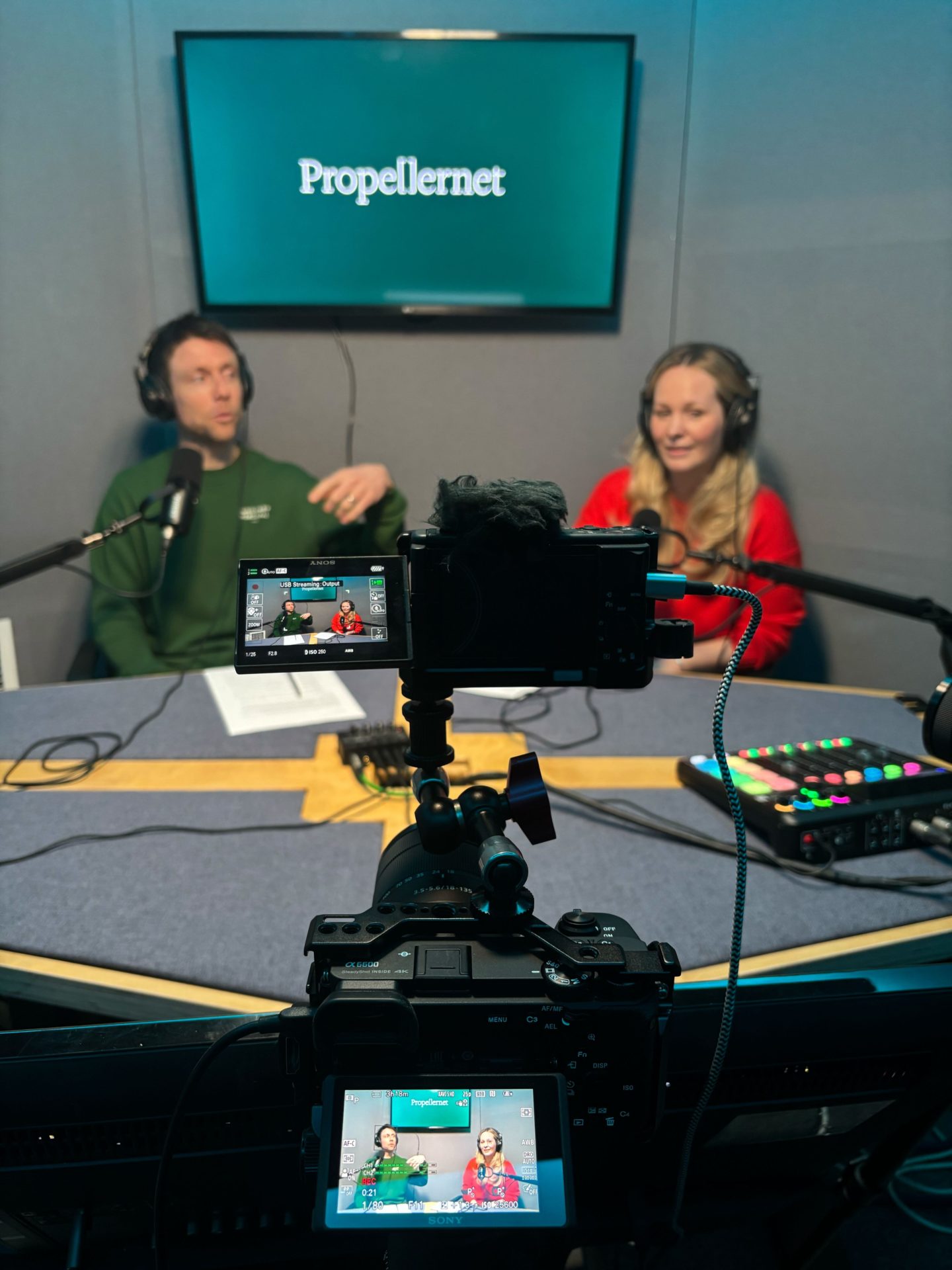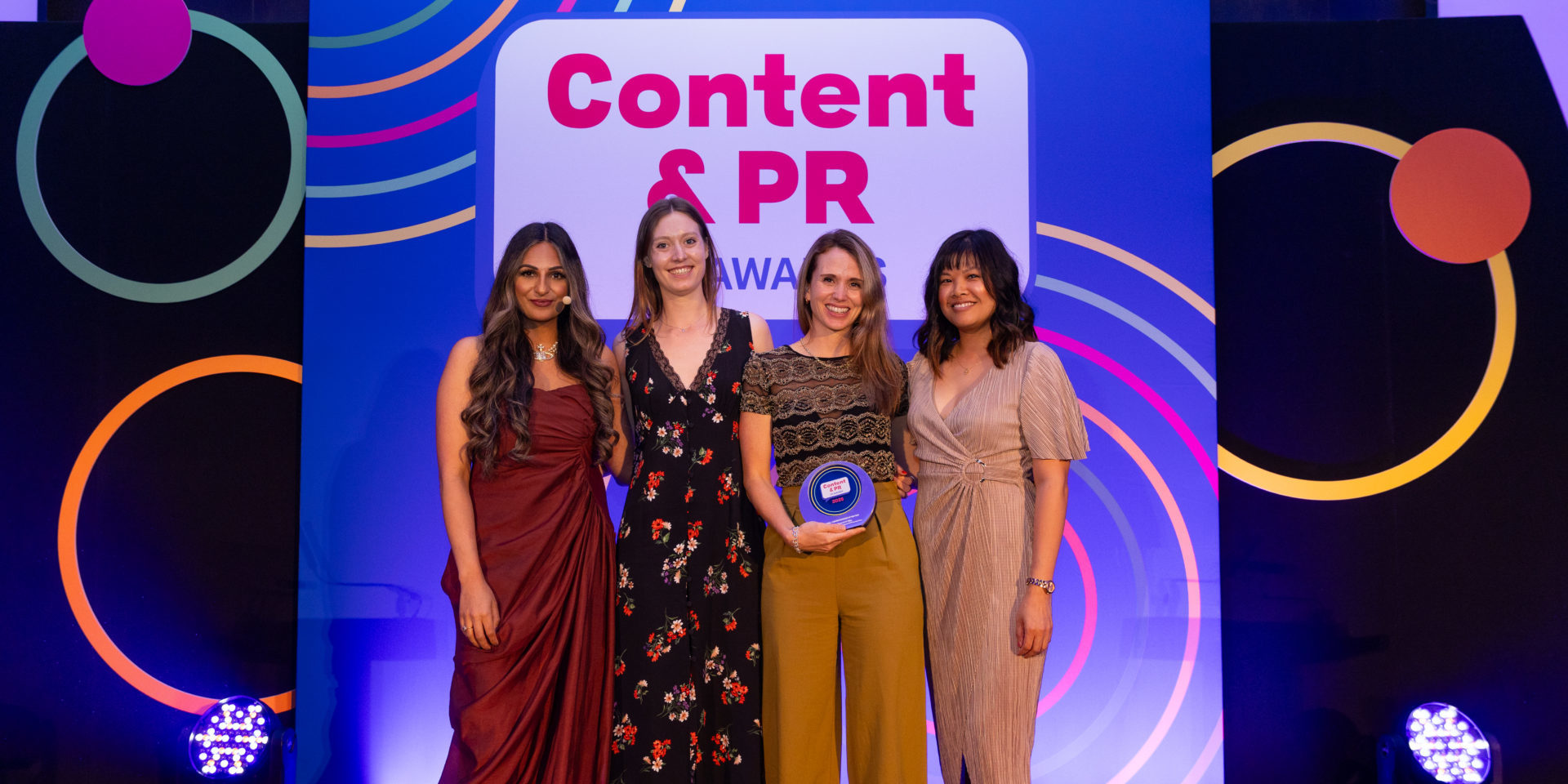
Episode #33
In this episode of the Digital PR Podcast, Louise Parker is joined by Stephanie Finch to explore the evolving landscape of digital PR – with a particular focus on the growing challenges of link building. As media policies shift and AI transforms how we search, they discuss why it’s time to rethink traditional success metrics. From declining link-to-coverage ratios to the rising importance of brand visibility, this conversation unpacks how digital PR teams can realign client expectations and stay ahead in a changing search landscape.
Have a listen or read the full transcript below.
Louise Parker:
Hello, welcome to another episode of the Digital PR podcast. It’s just me, Louise Parker, hosting this one. And today we are talking about whether we should be reducing our link targets or expectations, bearing in mind everything that’s going on. And by everything, I mean publications changing their link policies, journalists losing their jobs, and AI making us think, are links even that important now? To chat this through, I am joined by Stephanie Finch, Senior PR Director in the Propellernet Digital PR Team. Welcome, Stephanie.
Stephanie Finch:
Thank you for having me. It’s lovely to be back in the pod room and talking about something that has probably aged me quite a lot in the last six to eight weeks, it feels.
Louise Parker:
Well, yeah, we’ll get to the crux of it really. Why are we talking about reducing link targets? Why is that the topic today? You know, how has digital PR changed? Talk to me about what’s been going on in your digital PR life.
Stephanie Finch:
It’s a funny one, isn’t it? Because I think historically we’ve always loved to say getting links is getting harder. I think I’ve said that for 15 years. It just always seems to have been getting harder. So to suddenly come out and be like, it’s still getting harder. It doesn’t feel like something new, but it is happening now. I think we, I’ve worked in digital PR for 15 years and you do get a feel for when there is a big change afoot and when there is sort of a cycle of change happening and we are in that shift, definitely.
It’s not just to do with the fact there’s lots of us, lots of digital PRs, it’s become quite an established industry. We’re not new anymore. So it’s obviously harder because there’s more competition among ourselves and it’s harder because there’s less originality, you know, like it’s harder to come up with new campaign ideas because so much stuff has been done previously.
That’s not why it’s getting harder. That is just part of the challenge of being a digital PR. What is actually impacting links coming through are these huge changes in the Western media landscape. I shared last year that in 2003, there were 8,000 redundancies in the Western media. There were 4,000 last year and they’re still being rolled out. The online media world is just in such a freefall trying to sustain itself as a business and it’s so difficult to bring in revenue.
So we’re seeing this being played out quite differently internationally. Canada news media have successfully sued Google to be like, don’t steal our content. We need this revenue to fund the news and report the news and you can’t take our traffic away from us. I’m definitely seeing a lot more paywalls popping up and also enforcement of paywalls happening quite a lot more as well. And then in the UK, bearing in mind the UK has tended to sort of be the innovators in online news, like everyone wants to be like the Daily Mail, they have introduced affiliate schemes before everyone else. And now, you know, places like Reach are rolling out no linking policies. And it could just be a matter of time before we see that going across the pond as well.
And so what it means for link building, I want to split some numbers because I feel that anecdotally like we’re getting less links. And can I prove it? And so for one of my clients, the numbers were scarily accurate for my feelings. So in 2003, the coverage to link ratio was like in the high 90s. So like 90% of our coverage that we secured had a link. In 2004, that went down to 81%. And this year, it’s at like 67%. And looking at some of our other clients, the ratios are around that 60. So it’s between like 55 and 65 is kind of where our linking to coverage ratio is at at the moment, which is like 20–30% less than it was just two years ago. So it’s not about building getting harder, but you’re just less likely to get a link in a piece of coverage now.
Louise Parker:
Do you think it has anything to do with the type of stories people might be going out with? And I’ll say people like our team, but generally what the industry seems to be going towards. Like I think years and years ago, there was a lot more talk about creating campaigns because then you can create a campaign page and it’s a linkable thing. Like a journalist kind of has to link to it as a source. Whereas in the last year, two years, there’s been a lot more push around reactive or press office things which don’t require any content, things which get links directly in category pages. Do you think that affects the ratios as well?
Stephanie Finch:
When we started asking for links. That’s why the campaign page was born because at that time, and I’m sort of talking about, I don’t know, mid to late 10s, like 2015 up to about 2020, journalists wouldn’t link to a category page because it just felt weird. And they were like, we’ll link to something that is useful. I remember writing so much in emails, like, if you could link here, it’s really useful for your readers. And it was all about putting the reader first, rather than the SEO benefit behind it.
And then it was interesting to see us move away, but actually, we can just get links straight into category pages, we don’t need to do the supporting campaign content. And then it’s sort of going full circle, we’re coming back to actually, that’s one of the most useful things for the reader. It’s sort of a much more established journalistic…
They’re more comfortable to link to a source, a resource than just… I think what’s happened is they’re more educated and they know that linking to a category page doesn’t serve their readers or them, but it definitely serves the brand. So it feels like a very one-sided relationship in that respect. But then I think maybe just linking in general, and I do understand it from the online media, they know that a link is so powerful for the brand.
And they’re struggling so much to secure money, it seems a bit like, yeah, you would be like, well, we’ll charge you for it. And then that doesn’t count. And then we’re stuck in this weird place we’re at now where maybe links won’t matter anyway. And it’s just the brand mentions.
Louise Parker:
So I guess, you know, what’s nice is that sometimes you have long-term relationships with clients and you work with them over a number of years. That can mean that you have set your kind of link targets or link expectations, maybe two or three years ago. Is that a kind of a bit of an issue where that was a different time? And now we’re kind of fighting a bit of a losing battle really because we’ve got a target that was realistic three years ago, not so much now.
Stephanie Finch:
I think if you’re working for a UK business or your brand or the client you’re building links for is a UK business, those sorts of link targets are out of date or the ways of working are. It’s a conversation I’ve started to have with my clients. But looking at the numbers, I’m like, our coverage is actually fairly consistent across the years. It’s literally just the ratio that is dropping. So it’s not that we’re securing less.
And they’re getting there. So we’re securing the same amount of coverage, but links are lower. And if we’ve got clients who are based in the UK and obviously having coverage and your brand being shared in UK sites is undeniably of value and it would be weird to…
Well, I do find it difficult when some brands ignore coverage in the UK. I get syndication from an SEO point of view, affiliate links, syndicated links feel not impactful, there was always this core belief I felt here. It was like, yeah, but if I worked for your brand, I would be really happy with that coverage from a more sort of PR value point of view rather than an SEO point of view. And that now does seem to be the way the industry is going, the way search is going.
So yeah, to answer your question about linked targets from two or three years ago, if you’re working with someone who wants to have UK coverage, you have to have quite an honest conversation about how the links from UK coverage are dropping. They’re not impossible to get, but just not in the same amount of numbers that we were seeing across the industry two or three years ago. And I’m quite comfortable saying that because if it was just us, if it was just our campaigns just Propellernet’s campaigns or we’re getting less links and all the other clients, competitors, were all getting a load more links, I would be like, Christ, it’s a nice problem, not a bigger problem. Looking at competitors of clients and other link building activity going on, I don’t think it’s a case of us underachieving. I think that is just the state of the industry, definitely.
Louise Parker:
Yeah, that’s like a good thing about handy tools like Ahrefs. You can kind of snoop around at other people’s work and see what’s going on for you. Yeah, no, that’s very helpful. I guess you’ve touched on it a little bit, but is that part of how you would educate a client or a stakeholder in a business about this change that we’re seeing and maybe bringing up the conversation around success isn’t just number of links?
Stephanie Finch:
Yeah. My experience is that even though we’re getting, for example, like less links in our coverage, the impact of those links is still being felt and being seen.
So I think one way to have a conversation with a client about changing link expectations, certainly, is to look at what their competitors are doing and realising that actually they’re good. It’s not that they’re getting left behind because everyone else is getting loads of links and they’re not. That’s one way to approach it. The other way is also to show that the links that are being secured are having a huge impact and they are still working because tip for tat, the links they’re securing, either their competitor might be securing less or the same or not quite. And so it’s working even though there’s less, the way that how hard those links are working is still happening.
Which makes it easier to have these conversations. If we were getting less links and there was not any good change in the rankings or traffic, that would be harder to have those conversations. But it does seem that even though there’s less of them, the links are still working hard.
And I think as well now is the time to be having those conversations. Like, search is changing. Clients, everyone in the industry is aware of that. Even people less clued up on SEO, like more traditional PR teams – everyone knows when you Google something, it looks different, the answers look different. So starting to have those conversations around the fact that we are now looking at a completely different search landscape makes a lot of sense and will make those conversations easier to have as well. And then look forward-facing about the sort of things that we should be looking at or start to think about.
Louise Parker:
Yeah, I mean, we are recording a couple of days after Google formally announced the AI mode that is now out in the US, where it’s basically the AI overview on steroids. So it basically just looks like ChatGPT. And at the moment, it is an opt-in, but it is probably likely that that is maybe what Google Search will look like in just maybe a year or two years, or however long.
But it obviously relies more on AI, which PR people, as you mentioned, are starting to kind of realise the part that they play and how it’s not just links. Something like ChatGPT doesn’t take number of links into account. It’s basing its answers on something completely different. So that’s, like I said, a really interesting time to be talking about digital PR.
Because yes, it’s changing in our traditional sense, in our kind of old-fashioned getting links for SEO value mindset, but it could perform such a vital role in the new landscape. Are you scared or are you excited?
Stephanie Finch:
Never scared. Intrigued. It was the interview you had on this pod with Stella. I was really taken by something she said about if there is a gap or somewhere where she thinks digital PR teams could definitely grow, it’s in their reporting around brand message and brand tone. The irony is not lost on me that as an SEO PR, I felt like we could teach traditional PR so much more about reporting their work and showing the value of the coverage they’re getting. You know, not just on what title or publication it landed in, but also if it had a link and then how the rank…
You know, for me, digital PR has always been about measurement and being able to prove the value we’re doing through that quite concrete business KPIs. And so then it’s ironic to suddenly have to look back to or look towards traditional PRs to be like, actually, how do you report on brand message and brand tone and relevancy and impact? Because now that’s really important for search – more so than it was before.
Louise Parker:
I know, I was just going to say it’s, again, irony not lost. I think digital PR became such a popular industry and type of activity because you had that ability to be able to put a financial number against your PR work, which was the thing that PR people always struggled with. The thing that PR people also struggle with is the other side of reporting, which is, I think you go back to traditional PR and think, okay, tell me the answers of how you do this. And there are lots of ways to be tracking the brand side of things. There’s probably not a perfect way and there’s probably not a foolproof way.
And I think that is interesting and something that we might just have to get more comfortable with. This is veering off slightly, but it’s a point around using ChatGPT in terms of search or the AI mode.
ChatGPT doesn’t have any reporting around telling you how people are searching. AI mode – they currently haven’t said. We might be going into a future where being able to report and be able to have solid data about how people are searching and the impact of our work is going to feel a bit more woolly. And it’s weird because we’ve come from an industry which was so hot on this is proving our worth and this is why you would do this type of activity.
Stephanie Finch:
I had a thought randomly walking to the office the other day about the state we’re in. Because we’re in such a huge state of change, I feel like we could, or we just will, go back to that sort of Wild West of tactics and magic oils and ointments to sort of be like, yeah, we know what we’re doing. I was like, Christ, like now could you just pay for a newswire with like a story with loads of relevant – like exactly how you want your brand mentioned with relevancy – and get it on all these websites? No links, doesn’t matter about the link.
I was like, well, how does Google code that or allow for that sort of content distribution? And so yeah, we don’t know what we’re reporting on because we can’t see results from Chat.
That’s the bit that makes me a bit nervous. I think doing the work – ultimately, it’s going to level out again and standardise. And if Chat becomes a new search engine, or if AI search engines become the biggest tools that people use, then more information will get released. And that sort of makes sense because they’re going to have to make money at some point and paid search is going to have to get up there. And it will probably go through the same cycle that Google has over the last 10 years. We’re at the start of a new cycle with a new search engine and new things.
But ultimately, brand building and putting your brand in front of people with the right message, with the right tone is not going to go anywhere either. That’s still very useful – as long as online media exists, which is the other thing that just doesn’t completely pop, which it shouldn’t do. But I think that it’s mad that both of these huge changes are coming at the same time. And I mean, obviously interlinked because, again, editorial news websites would be taking such a hammering from Chat as well.
I think my advice is this time of uncertainty is the right time to talk to clients honestly about what’s realistic. And my guideline for myself when having those conversations is we want to be ambitious, but we also have to be realistic. There’s no point me telling you we’re going to get 200 links for a piece of work when I actually think we’re going to get about 35 or whatever it is. But you’ve got stats to help you back up and say, look, we are good. And the coverage is the same. It’s just the link ratios are lower. That’s an industry, you know, that’s an online media industry thing, not our thing.
I think the other point about the type of stories that work or don’t work for links – I think that’ll be interesting going forward as well, because there’s going to be this tightrope we’re going to have to walk between relevancy and brand building, and both are important. And then that’s, like you said, something that gets into more of a woolly space of like, this is a very creative brand building idea, but I don’t know how relevant it is.
Like, if it was a boiler company – like fix your boilers – you might go. So I think we’ll still use reactive topics to be relevant, we’ll use campaign tactics to be brand building, and they’re both going to work in tandem together, much the way they do now. But maybe let’s focus less on link reporting. Maybe.
Louise Parker:
There is a future where there’s less focus on link reporting. What are the metrics that you think do matter most in digital PR, or you can see mattering most? We have spoken about it, but just to round things off to you, what are the most important metrics in digital PR?
Stephanie Finch:
If I put the shoe on the other foot and I was the client, I’d still want to know about links because there are benefits to links other than getting an SEO signal. And I might not be as concerned if their coverage didn’t have links, but I would still definitely like to know if it did.
Brand mentions, I think, would be useful, but it’s very difficult as a quality metric. Like, that needs some thought as to what brand mentions you’re counting or not counting. So I think then as a client, I would feel more weight of making sure the stories that were going out were stories that I thought were relevant or brand building and had the right brand message or at least the brand tone. And that I was happy with that story, so I don’t mind if it gets a link or not, I’m just really happy that story’s out there being associated with my brand.
And then obviously, then publication titles and audience views, sentiment, social sharing, and how we might just be putting stories out on different platforms. It might be that we’re not bothered if a story is covered on MailOnline’s website, but if it’s covered on their social or TikTok, then we might be like, yes, this is great.
Louise Parker:
Great. Really interesting to talk to you. Yeah, it’s like you said, such an interesting time to be talking about this, which is why the topic has come up. If anyone wanted to quiz you a little bit more about this, or anything digital PR-related, you’re up for them DMing you on LinkedIn or something like that?
Stephanie Finch:
Please do, yes. Stephanie Finch. Find me on your channels, probably commenting on all your posts.
Louise Parker:
Excellent. Well, lovely. Thank you so much for joining and I hope everyone has enjoyed listening or watching and we’ll see you for the next episode.
Stephanie Finch:
Bye.






